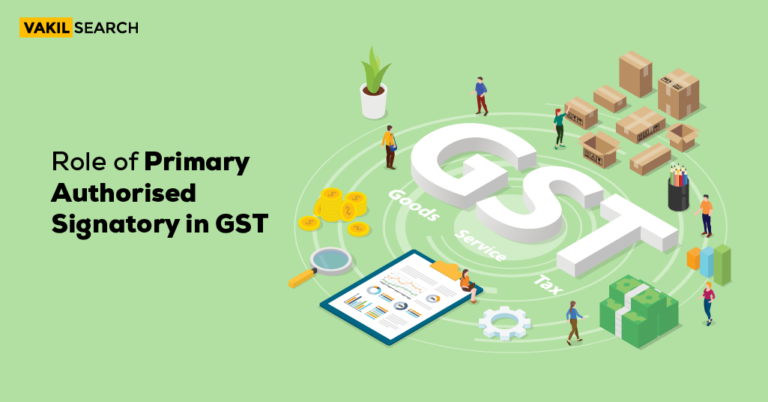If a taxpayer, whether registered or not, is dissatisfied with the decision of the adjudicating authority, he or she may file an appeal.
What is Demand Order Under GST?
Demand Order Under GST, a demand order refers to an official communication issued by the tax authorities to a registered taxpayer, requiring them to pay an outstanding tax liability.
The Demand Order Under GST specifies the amount of tax due, along with any applicable interest, penalty, or late fee. It also includes details such as the tax period for which the demand is raised, the relevant section of the GST law under which the demand is made, and the reasons for the demand.
Upon receipt of a Demand Order Under GST, the taxpayer has to pay the outstanding amount within a specified time frame to avoid further penalties or legal action. In case the taxpayer disagrees with the demand, they can file an appeal with the appropriate appellate authority within the prescribed time limit.
Pre-condition for Filing the First Appeal Against a Demand Order under GST
- For a taxpayer to file an appeal with the Appellate Authority, the adjudicating authority must issue an order.
- To open the PDF file, you must have a PDF reader installed on your computer.
Procedure for Filing the First Appeal Against a Demand Order
Step 1: Log into your account on the official GST portal: https://reg.gst.gov.in/registration/
Step 2: Navigate to Services > User Services > My Applications. On the ‘My Applications’ tab, select ‘Appeal to Appellate Authority’ as the application type and then click on ‘New Application.’
The webpage denoting ‘GST APL-01-Appeal to Appellate Authority’ will appear.
Step 3: Choose ‘Demand Order’ as the order type and input the order number. Click the search button.
The orders page will appear. Before you
Step 4: From the drop-down list, select one or more categories for the disputed case and click on add.
| Do note that the date of communication and period of dispute can be edited by the taxpayer. |
Step 5: Upload annexure to GST Number Registration – On the order page, select the ‘click here’ link. The GST APL-01 template will be downloaded to your computer. Click the ‘Enable Editing’ button to amend the annexure’s details. Save the modified file as ‘AplAnnexureTemplate.pdf’ and upload it.
Step 6: On the order page, click the ‘Disputed amount/Payment details’ button to update the disputed amount/payment details.
- Enter the amount in dispute by categorising it as a tax, late fee, or interest.
- The amount of demand generated and admitted is indicated automatically.
- Enter the percentage value of the pre-deposit that will be paid, which is by default a minimum of 10% of the disputed amount.
| A lower percentage needs approval from the authority. |
- Enter the place of supply for the amount of demand accepted. To do so, go to the following URL and click on the hyperlink ‘Integrated Tax’
- Pay using cash or ITC in the electronic ledger can make the payment.
Our GST Percentage Calculator can help you determine your GST owed before registering.
| The amount of dispute cannot be more than the demand created. |
Step 7: Attach all necessary supporting documentation. Enter a description for the document and then select a file to upload.
Step 8: An applicant can preview the submitted application by clicking the ‘Preview’ button. The PDF file will be saved to your computer. The applicant must check to see if the details have been accurately updated before proceeding to file.
Step 9: Then you may check the declaration box. Then, pick the authorised signatory and enter the location. Submit the form with DSC or EVC by clicking the submit button.
| A confirmation message will be displayed upon successful submission. |
Appeal Status Description for Demand Order
| Description | Status |
| Appeal form successfully filed | Appeal submitted |
| Appeal form successfully admitted | Appeal admitted |
| When an appeal form is rejected | Appeal rejected |
| When hearing notice is issued | Hearing notice issued |
| When counter reply received against a notice | Counter reply received |
| Issue of Show cause notice | Show cause notice issued |
| Appeal is confirmed/modified/rejected | Appeal order passed |
| Adjournment of hearing to next date | Adjournment granted |
| Rectification application filed | Rectification request received |
| Rectification application is rejected | Rectification request rejected |
| An appeal in order is rectified | Rectification order passed |
Conclusion:
In conclusion, appealing against a demand order under GST is an important process for taxpayers to exercise their legal rights and challenge any erroneous or unjustified tax demands raised by the tax authorities. It is important to understand the grounds for appeal, the procedure for filing an appeal, and the documentation required to support the appeal. Seeking the assistance of a tax professional or legal expert can also be helpful in navigating the complex appeal process. By following the guidelines outlined in this guide, taxpayers can effectively challenge demand orders and ensure that their tax liabilities are determined fairly and in accordance with the provisions of the GST law.










